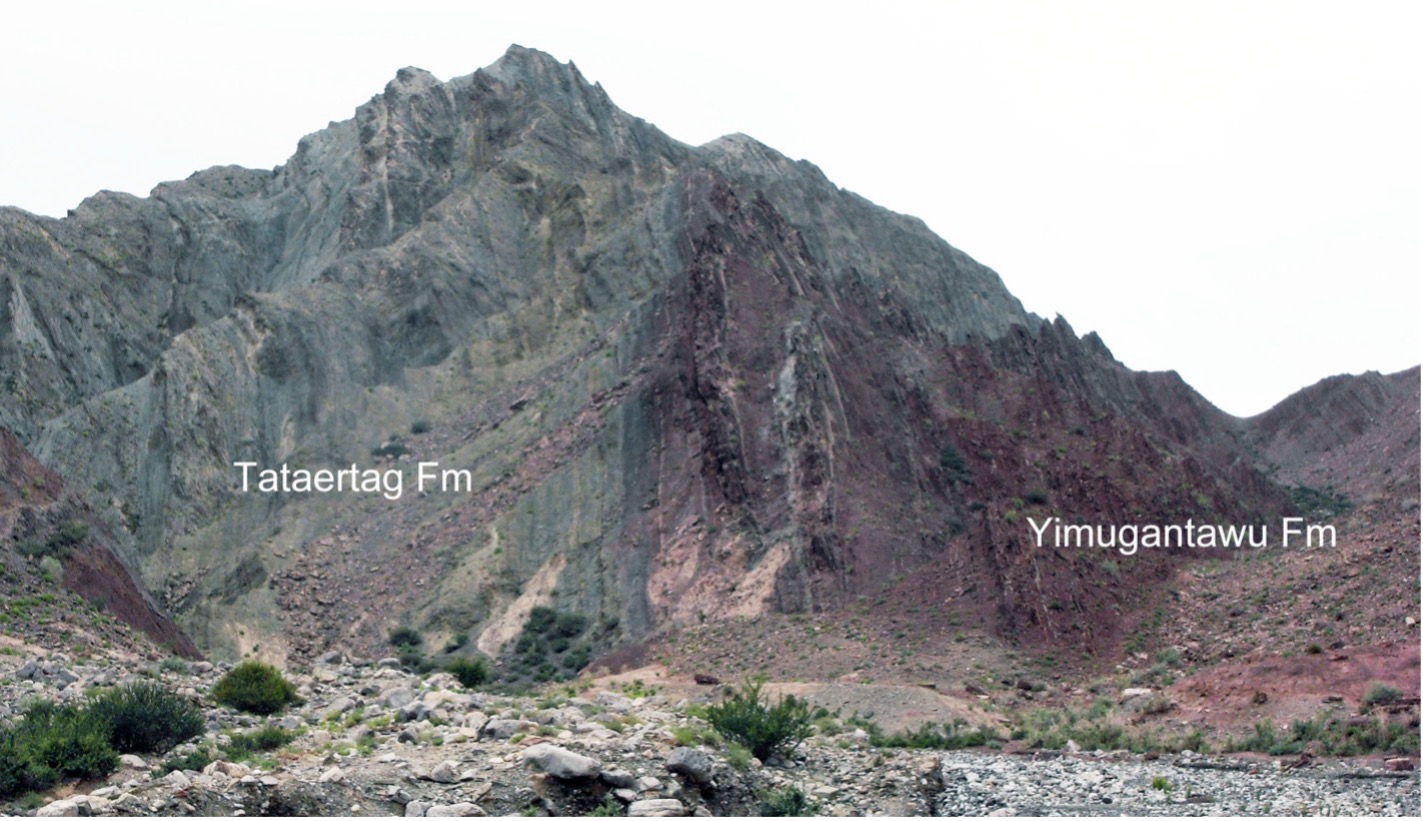Yimugantawu Fm
Type Locality and Naming
The name is derived from the Yimugangtawu rock series by Zhang Zhenhua et al. (1957). The type locality is the Yinganshan (79°18'E, 40°45'N), Keping, Xinjiang Uygur Zizhiqu.
Synonym: (依木干塔乌组)
Lithology and Thickness
It is dominated by purple mudstone and siltstone interbedded with green thin-bedded siltstone and fine-grained sandstone. The calcareous materials are increased in the middle part, the green calcareous sandstone, sandy limestone, even the oolitic limestone lens or thin-bedded limestone are common in this part. The thickness of this formation is changing from 150 m to 600 m commonly, 519 m at the type section; the maximum thickness can be up to 1170 m at the Yimugantawu area.
[Figure the lithology of, and the contact relationship between the Yimugantawu and Keziltag formations at the Tierekeawati, Kalpin, Xinjiang (Photography by Wang Guangxu)]
Relationships and Distribution
Upper contact
The formation is conformable with the overlying strata, Kiziltag Fm
Regional extent
It is exposed on Kalpintag, Yinganshan, Tielikewatie, Bachu areas. It can be correlated with the Xiushan Fmof Yangtze Region according to the fossil groups (Zhao Wenjin et al., 2009).
GeoJSON
Fossils
The fossils of this formation includes conodont Ozarkodina cf. Edithae (Zhang et Wang, 1995), and abundant fishes, Hanyangaspis guodingshanensis, Hanyangaspis sp.; Pseudoduyunaspis bachuensis; Sinacanthus wuchangensis, Sinacanthus triangulatus, Tarimacanthus bachuensis; Xinjiangichthys pluridentatus, Xinjiangichthys tarimensis and Chondrichthyes indet. (Wang Junqin et al., 1996; Zhao Wenjin et al., 2009).
Age
Depositional setting
Additional Information

